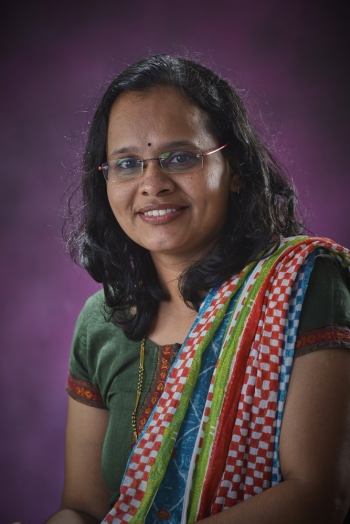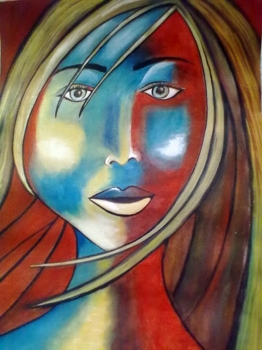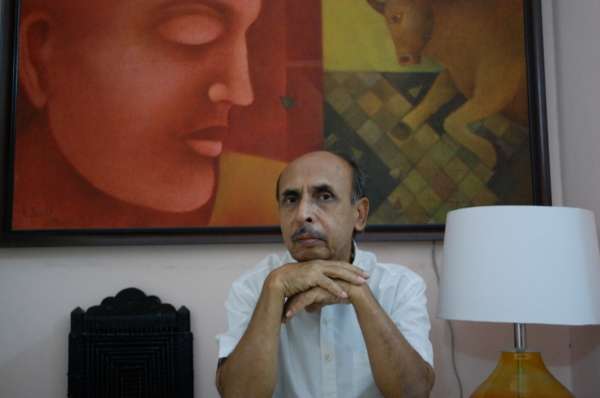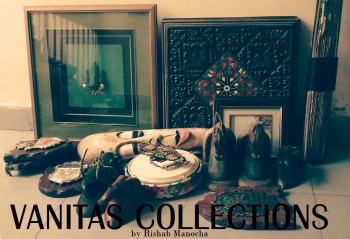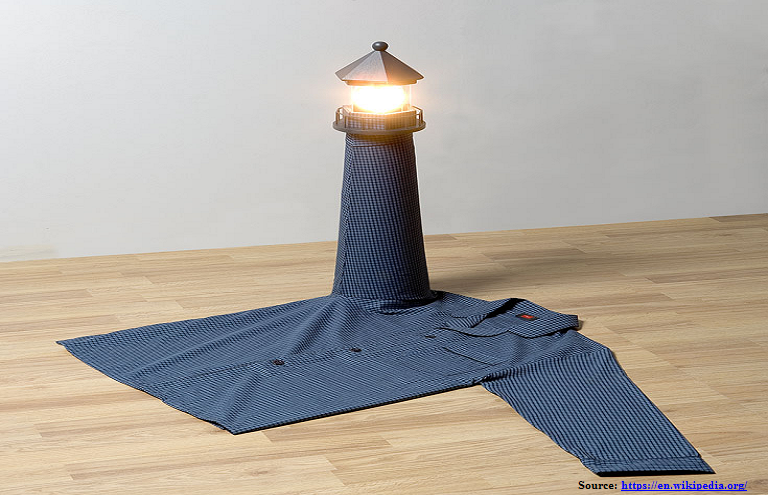
Considered the most liberating form of art, mixed media involves breaking boundaries the use of different mediums, ephemera and materials to create strong compositions. Simply, put mixed media art is all about breaking the boundaries between different art forms, attempting to expand the possibilities of the canvas.
The Origin
Mixed media art finds its existence in the early twentieth century when several artists were fed up with the traditional artistic styles and seeking to break up the monotony of their compositions. Radical cubists, like Pablo Picasso and Georges Braque, incorporated collages using cuttings from papers to their canvases. While the revolutionary Dadaists went a step further. In their search for expression through absurdism, artists such as Marcel Duchamp pasted found objects directly onto his canvases and transformed these mundane everyday objects into non-functional oddities by painting onto them. German visual artist John Heartfield developed subversive photomontages by pasting, rearranging, and overlapping photographs together from different advertisements and most-talked propaganda of the time. Gradually, Surrealists, Abstract Expressionists, Pop artists, started embracing mixed media art form openly and further expanded the art vocabulary.
Types of Mixed Media Art
Imparting a whole new dimension to creativity, there are simply no limits to what can be achieved by blending different art forms. Here are the common types of mixed media art, combining different techniques and mediums.
Sculpture: Quite often sculptures are created by utilizing different materials including wood, wire, metal, glass, clay, resin, found objects, and more, hence it can be classified as mixed media art. Many artists choose a base material and then add different materials like paint to create interesting elements of pattern, shape, texture, or color.
Collage: By definition, collage is the work of art wherein pieces of paper, newspaper clippings, photographs, fabric, ribbon, paints, and other ephemera are organized and glued down onto a supporting surface like a blank canvas, wood, paper, cardboard, stone, or any found object, and finally drawn or painted. Basically, it opens up the conscious and is usually a planned or controlled work of art, which provides you unrestricted freedom to use anything to create your own art. What is most interesting is that the origins of collage date back hundreds of years, however, it gained prominence in the art practices only in the early 20th century.
Decoupage: A type of collage belonging to the contemporary period, it involves decorating objects by putting together the different pieces of paper ( in color, texture, and size) in combination with special painterly effects, applying varnish, and other coatings. The surface of the object in the decoupage is typically hidden completely under the decoration taking the form of incrustation.
Assemblage: Though very similar to collage works, assemblage incorporates different three-dimensional elements to create a piece of art that narrates a story. Both man-made and natural items are used in creating assemblages with metal pieces, wooden blocks, planks, cardboard boxes making sturdy bases. Lightweight everyday objects such as beads, buttons, wires, plastic bottles, game pieces, toys are quite often used. Some assemblages are displayed as wall art like a painting, while others have three-dimensional representations as sculptures.
Bricolage: A French word for DIY (do it yourself), bricolage involves creating artworks employing a diverse range of unconventional art material and ephemera that come to hand, in a usual representation.
Altered Books: This mixed media art employs a book as its base, which is transformed into an interesting work of art. The book may be used as collage, painted, or torn out or reshaped into paper sculptures.
Wet and Dry Media: This is one of the most common ways to create mixed media artwork and usually involves fusing drawing with painting. Combining different paints helps to achieve excellent effects, for example, charcoal drawing can be mixed with oil paints to turn it into something more attractive. Also, mixing combining oil and water-based paints creates a unique look.
Famous Artists
Here are some famous artists — from the past and present, who have created strong compositions combining different mediums.
Pablo Picasso and Cubist Collage
Regarded as the creator of the first integral collage compositions, Pablo Picasso incorporated fragments of wallpaper, newspaper, magazines, sand, wires, posters in his artworks. In doing so, he effortlessly transferred the reality to the context of the imagery, and altered the expectations of perspective, shattering all stereotypes about the practices of painting. What made his works gain prominence was that the reality in his compositions was constructed according to his own will, not copied or reflected. This transformation of the everyday material, rejection of traditional ties, the unusual role of the usual things attracted other artists.
Gradually, a whole generation of cubists shared his fascination with mixed media art. Many artists mastered the techniques and extracting the elements of the composition from its context, brilliantly placed it in an alien environment, thus giving it a whole new meaning.
Not only did this but many cubist collages also employed a variety of media including paint, pasted paper pieces, oil cloth, and even chair caning to redefine the actual object by adding their cubist reinterpretation. Undoubtedly, art prints of the amazing creations of these masters are quite a sensation among contemporary home decor settings.
Njideka Akunyili Crosby and Textured Photo Collage
A Nigerian-born artist, Akunyili Crosby uses the mixed media art of collage to bridge the culture of her native Nigeria with her adopted American lifestyle. She lays dense collages in her paintings mixing photographs, paint, cutouts from lifestyle magazines, newspaper clippings, album colors, textiles, commemorative fabric on paper, and even marble dust. Occasionally, she also glues the pictures directly but mostly photo-transfers them, later applies color washes employing colored pencils and charcoals, which splits the collaged areas into distinct abstract blocks and give them a faded, almost receding effect with strong layers and textures. Ultimately, the contrasts weaved adds distinct tones in the same painting with an overall evocative design.
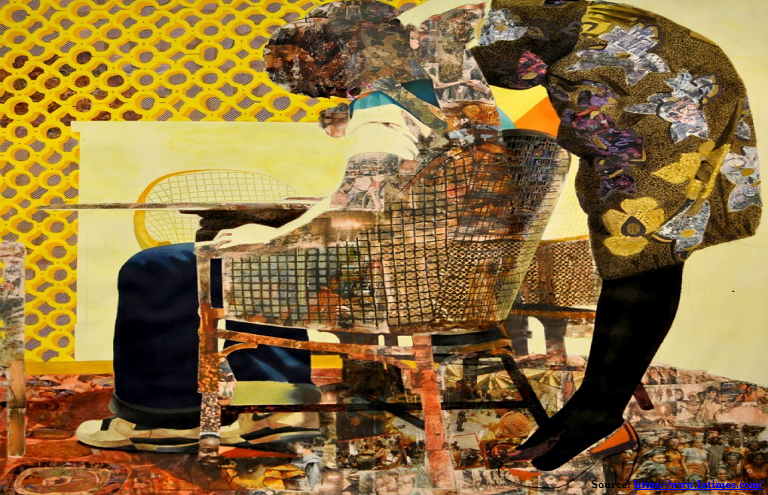
Anna Dabrowska (Finnabair) Art Journal
Polish artist, Anna Dabrowska, aka Finnabair is an art journaler and designer. She is famous for her intricate and artistic mixed-media journal pages, canvas layouts, collages, and uncanny altered art. In love with flea market supplies, she often incorporates these non-traditional materials (including paints, metallics, waxes)
along with her signature fusion style of steampunk and Art Nouveau in her art to employ strong texturing and add interesting design and a whole new composition. The intricately laid inviting details in her collages make it so compelling that it becomes difficult to move without taking a closer look.
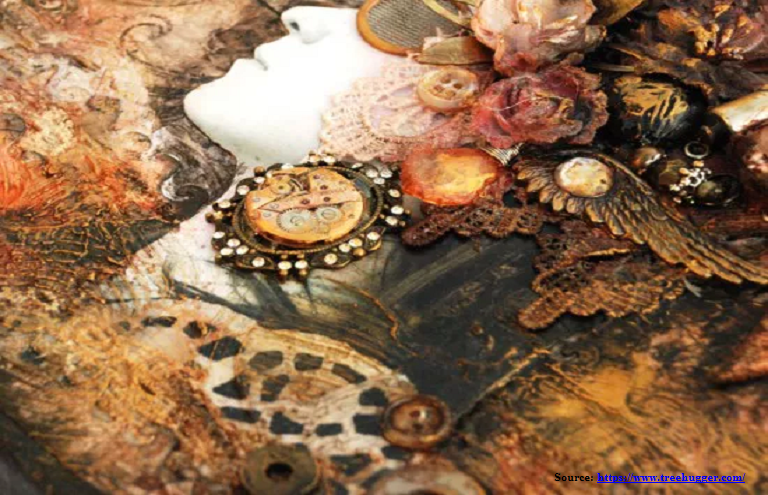
Martha Haversham and Found Fashion Collage
Hailing from the United Kingdom, Martha Haversham is an interdisciplinary contemporary artist and loves to evaluate lives and menial objects through her art. She is well-known for her creation of fashion pieces out of street trash, common everyday items, and found objects. In some cases, this includes turning a real flower into a swirling skirt with legs painted below, while there are also artworks that employ tiny pieces of garbage, such as cigarette butts, crumpled up leaves, feathers fell on the roadside, and discarded gum and candy wrappers. Each creation of her looks like haute couture art imbued with a sense of sarcasm. Her distinctive style offers a more minimalistic edge to collage.
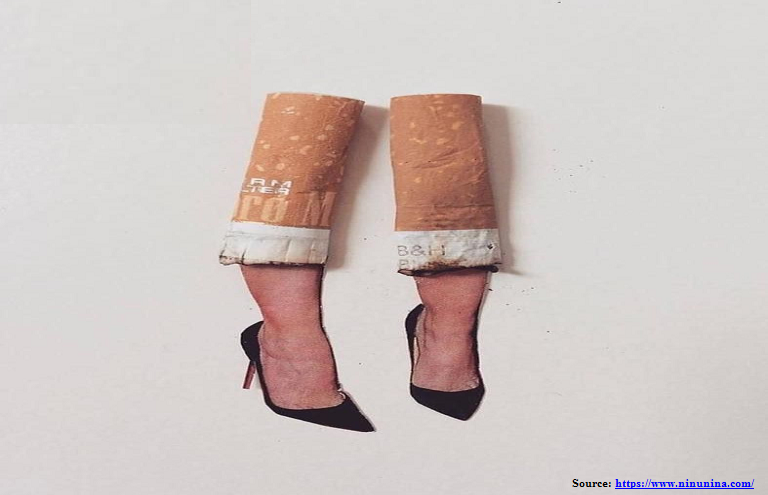
Erik Wahlstrom Music Collages
Architect turned photographer Erik Wahlstrom from Sweden lends his inquisitive eye to the world with his unique photography. Adept at capturing everyday scenes, he is an expert at infusing them with warm lit, simultaneously giving a strong atmospheric presence as well as a sense of dignity. His popular mixed media paintings are the ones curated for the experimental Swedish music band Familjen. These album artwork visions depicted images of deconstructed men, fragmented, and mostly featureless. To achieve the collage effect, Erik Wahlstrom uses his own captured photography with additional design principles.
Nikki Farquharson and Photo-Ink Collages
London-based graphic designer, Nikki Farquharson is renowned for her inked collage art infused with striking colors and bold print-like designs. Like Erik Wahlstrom, Nikki also uses photography, but with a seamless combination of different hues and textures. Her mixed media art is visually appealing and highly stimulating, an excellent option if you are looking for bold and lively art prints or works for your home. In the artwork below, the woman at the center of each pattern act as a focal point imparting context to every pattern around her, and certainly not the other way around.

David Fullarton Mixed Media Journaling
Scottish born, San Francisco based visual artist and illustrator specializing in creating mixed media drawings and paintings by combining imagery with text. Known to have despised the classic well-made notebook, he now fills them with elements of comedic mixed media art including scribbled phrases, scraps of paper, other ephemera, and journaling. It is these overlooked items of daily life that are the source of inspiration for the artist, and it is through his creations that Fullarton attempts to self-interpret and make sense of the world. He paints vibrant canvases comprising elements that jumble, overlap, and often mix together, a copy of complex modern life. Reminiscent of teenage chaotic doodling and naive writings and columns as the journaler learns, his works are a pure joy to look at.
Don’t forget tos hare your favorite mixed media art in teh comments section below!











